Via Francigena Route map 9 |
Santhià ~ Vercelli ~ Palestro ~ Mortara ~ Garlasco ~ Pavia |
Distance: 143km (1,317/1,900km) |
S l o w time: 7 days |
Vercelli rice fields | Exploring the ‘Italian food basket’ | Ancient architecture and accommodation |
So this is exciting: if you read our very first post on the Via Francigena you’ll know the Vercelli rice fields have always been on our must-see list. It just sounds so cool: giant steaming paddies where the world’s Arborio rice is grown, lanced through with hundreds of water channels, all laid out over 100km of bone flat land. Add in some crazy ancient pilgrim accommodation along this section too and the Vercelli rice fields began to appeal more and more.
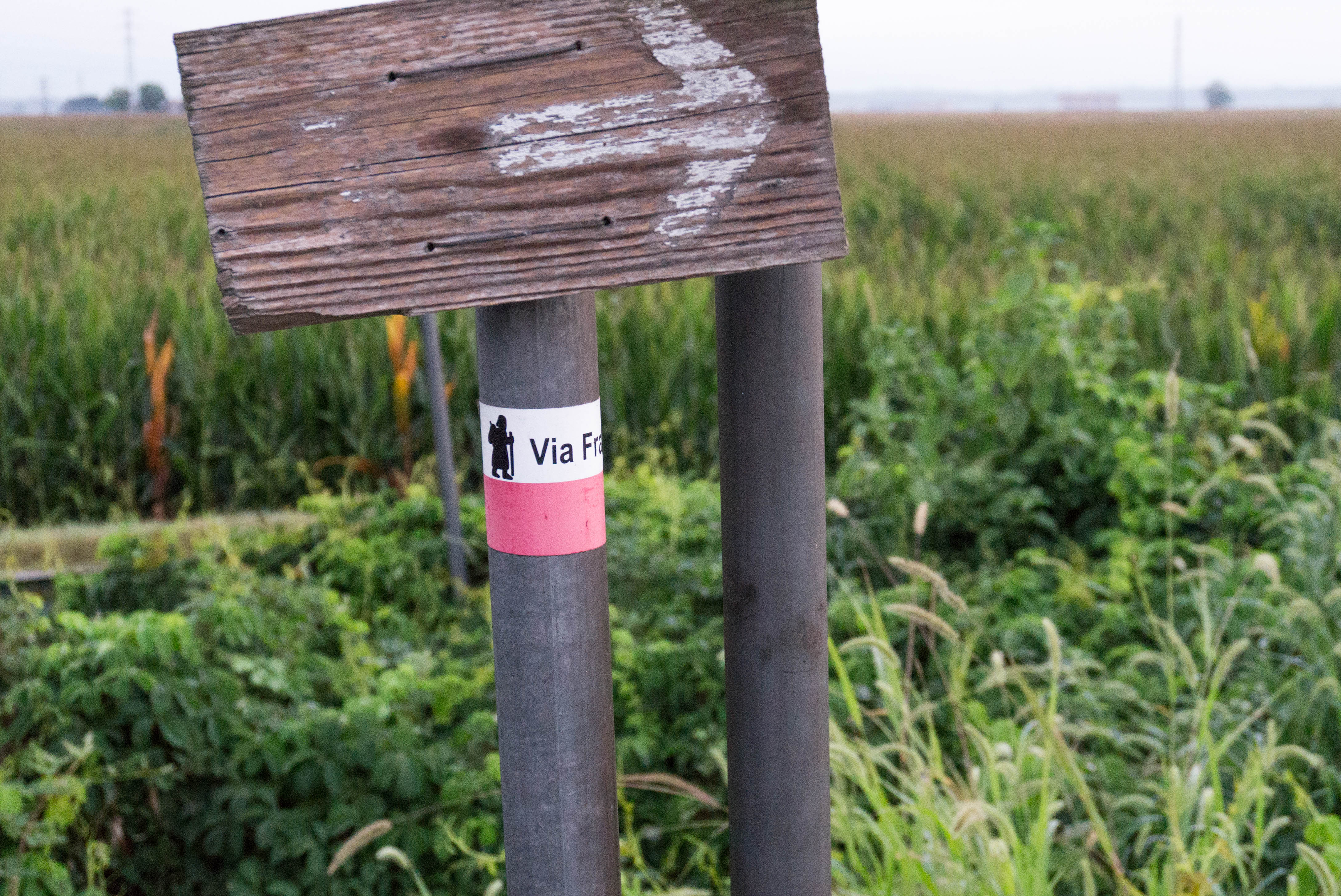
This story starts with our arrival from Ivrea into little Santhià, the gateway town to the rice fields. An Italian gent on a bike showed us into the pilgrim accommodation, neat rooms all stacked up around a lovely square.
He seemed keen to talk about the rice fields, showing us huge photos of the paddies in each season, and definitely pushing a favourite: ‘Ah, SPRING!’ he beamed when we came to that picture, ‘It is calm, it is beautiful!’ And it did look stunning: each field entirely flooded, the long grass replaced by giant square water pools.
‘What about summer though?’ We asked. ‘Ah, SPRING!’ Was the evasive reply. This was mildly concerning: it was July, and a continental heatwave. We had learned -er, quickly- that if you stay out much beyond 11am, everything turns into a shimmering, bleached wasteland, with temperatures merrily hitting 40 degrees. Not good.
So we came up with a plan. Determinedly set our alarms for 4.30am, we got up in the pitch black. We dressed, packed, and slipped through Santhià’s lamplit streets, and out into the plains beyond.
We were met with an amazing sight: a low red sun, rising to reveal kilometre after kilometre of misty rice field, each rectangular expanse bedded down in dark, ankle-deep water.
Cutting between the fields were poker-straight water channels, completely still, reflecting the pink morning sky. The path snaked ahead invitingly. It was utterly beautiful.
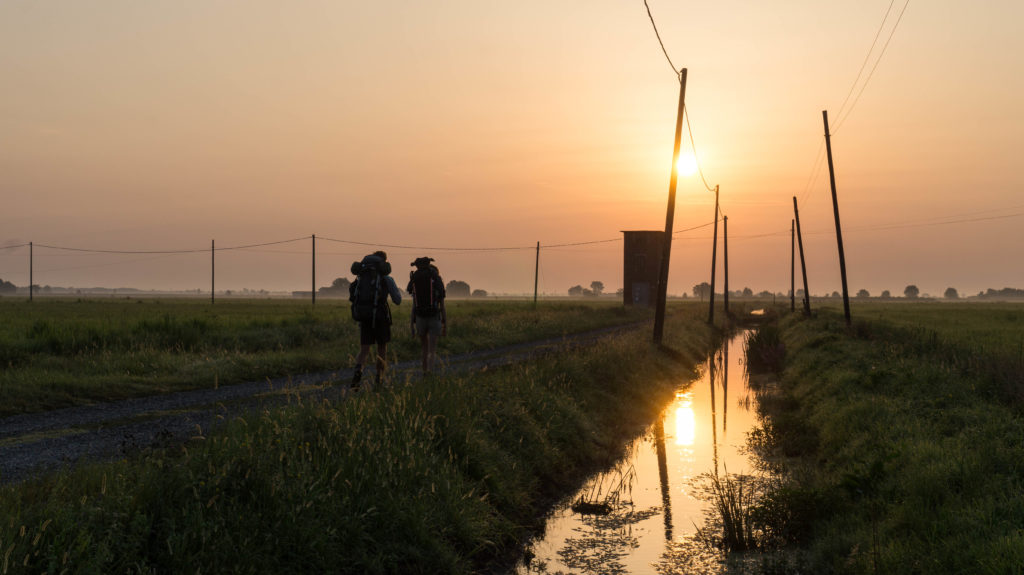
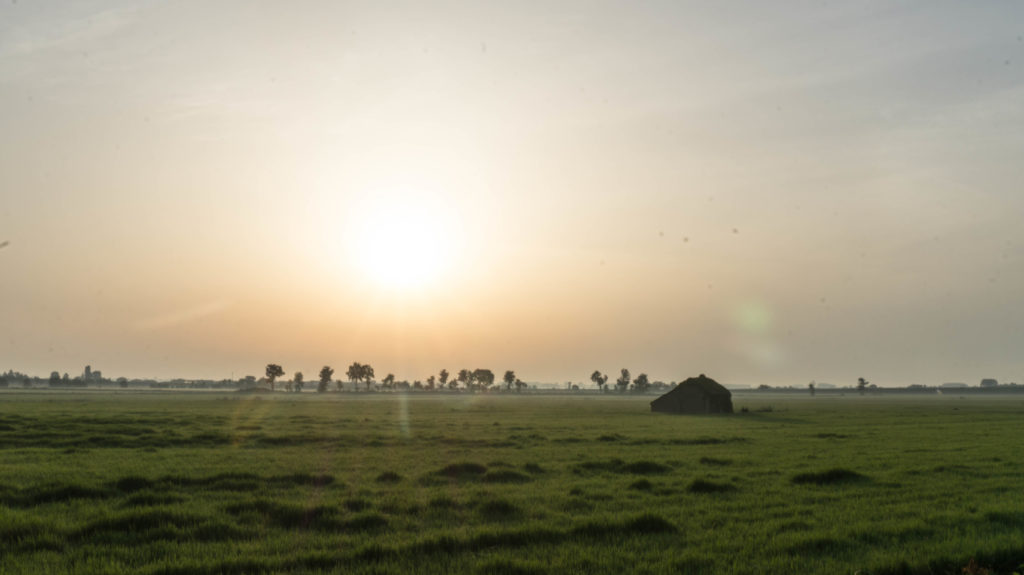
As we walked along, we became aware of little things. Small frogs plopping into the water either side of us; spiders spinning webs strung between the dewy blades; dragonflies glinting as they hummed around. A weirdly familiar smell hung in the air too, it took us a while to realise it was the smell of boiling rice.
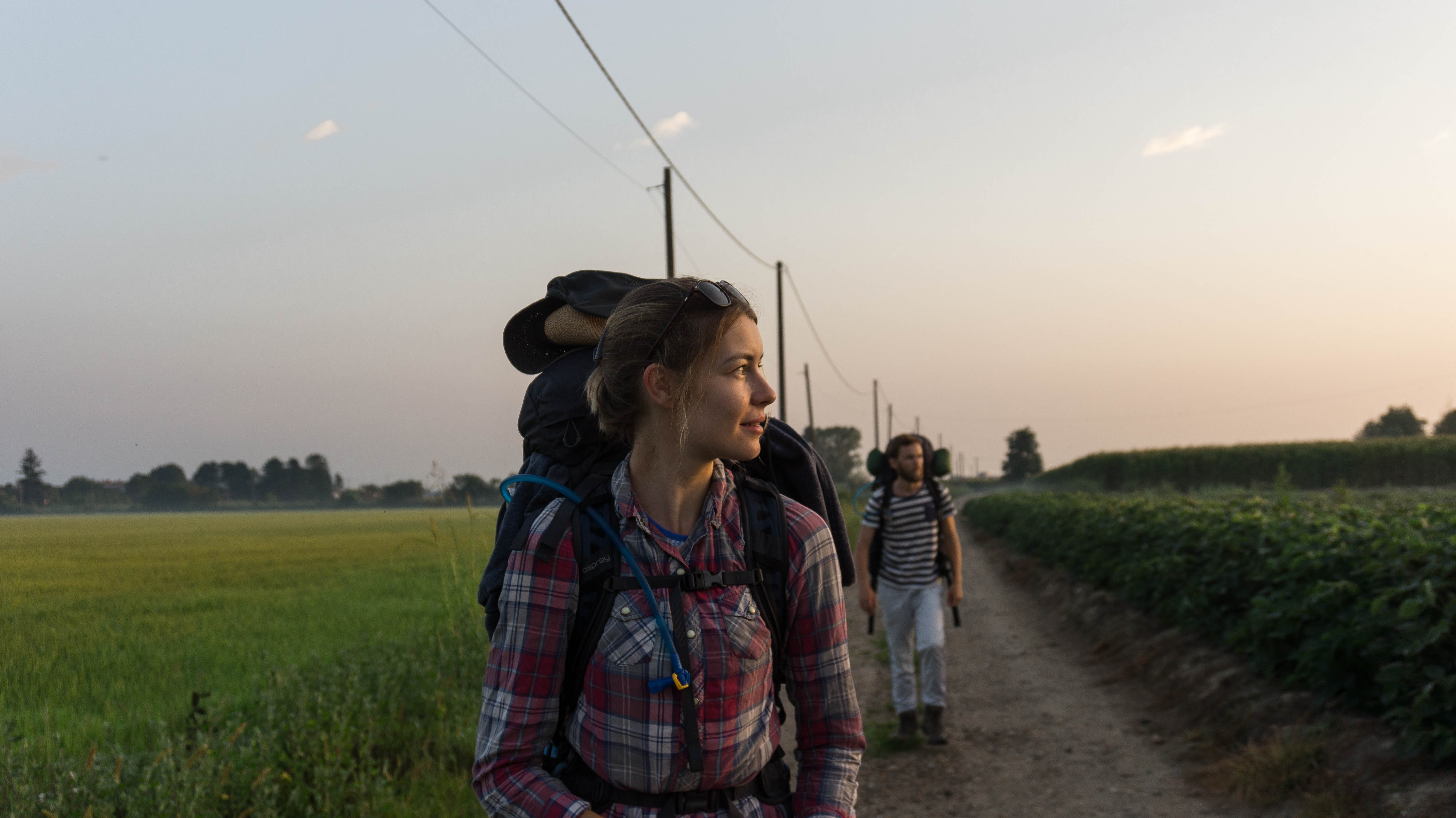
We wandered along the path, feeling completely enveloped in this strange landscape. There was no-one there, just rice fields as far as the eye could see. And it felt oddly tropical: the humidity was intense, even at that time, and our clothes stuck to our skin. The sun hung low and sultry, the sky a hazy pink. We stopped to look.
But as soon as we stopped, everything changed. Like they’d just been waiting for this very moment, mosquitoes surrounded us from nowhere. Suddenly the air was abuzz, landing on our arms and legs, head, hair. It was wild – we’ve never, ever, seen so many.
It was actually so overwhelming, it was funny. We still have crazy videos on our phones as we tried to document it at the same time as attempting to escape our little caravan of critters.
Now we know why yon man on bike was so keen on bloody Spring.
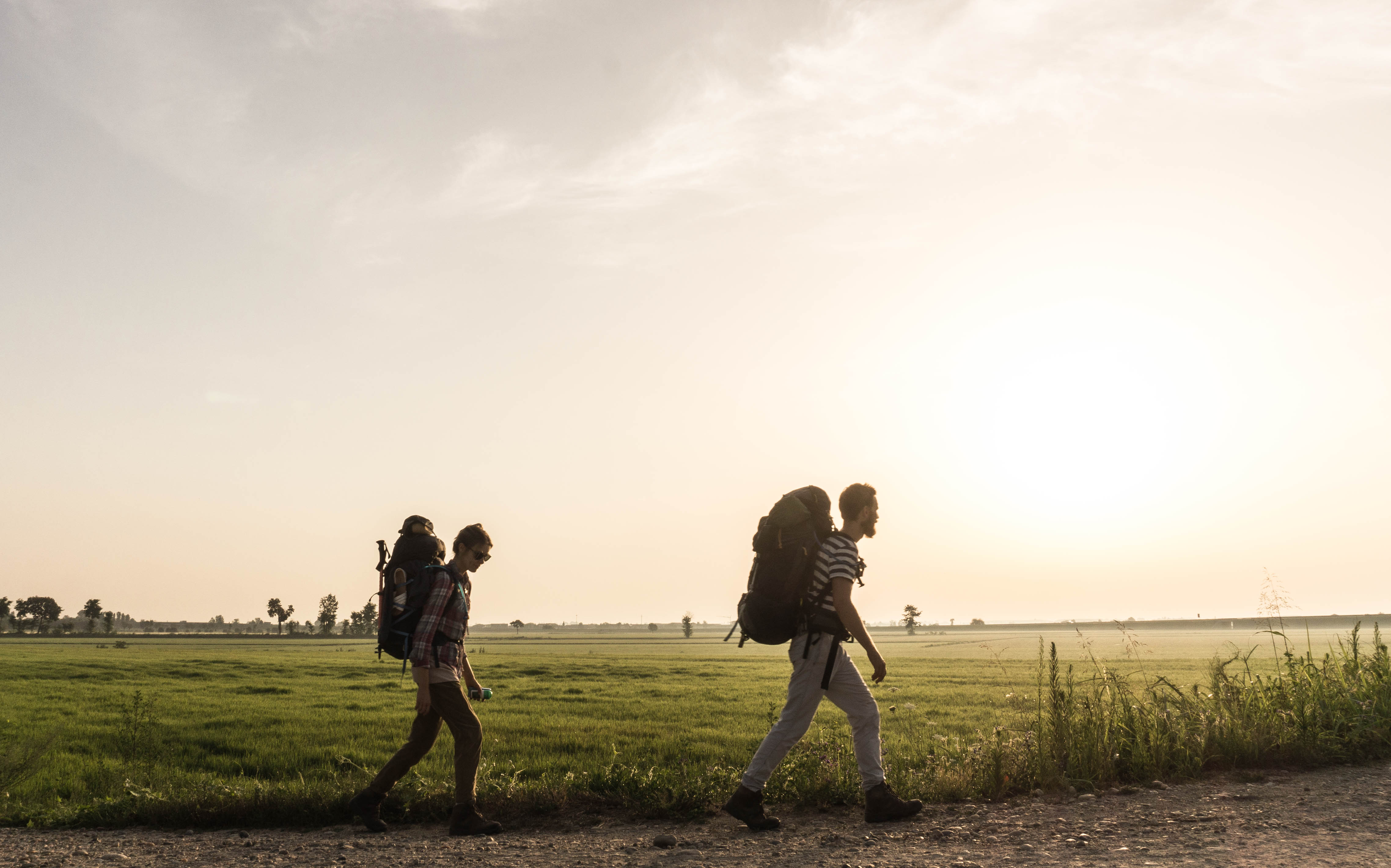
As we went deeper into those desolate flats, we were surprised by the challenge: the heat, the bugs, the alone-ness, just following those little VF signs wedged into the ground.
But when we burst into Vercelli, we found it mysteriously mosquito-free, and actually utterly charming. The central piazza was perfectly, stylishly Italian. We flopped down in a café there to eat huge helpings of taleggio and radicchio risotto. To us, Vercelli will always be this effortless, elegant oasis.
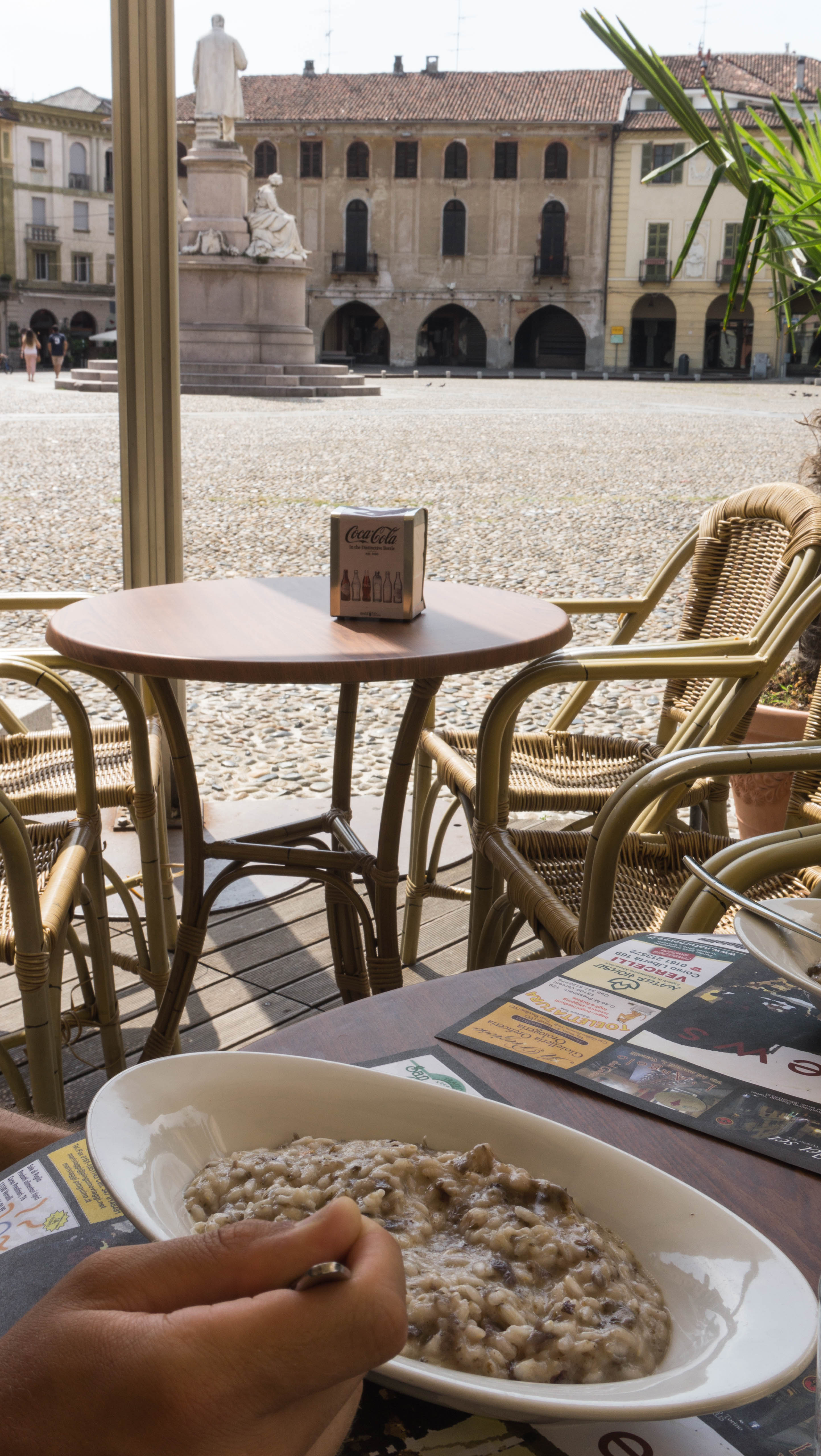
In the ostello that night we suddenly met a lot of other pilgrims. To our surprise, most of them told us they had completely bypassed the Vercelli rice fields and got the train instead. They shrugged, ‘Because there’s nothing there, is there?’
I remember we opened out mouths to say something, then shut them again. We could see what they meant. If nothing else, the mosquitos man.
But we couldn’t really agree. It had been a tough first walk, but we had seen so much in there to interest and enthral us: the little animals hopping around, the wild blasts of weather, the eerie pools so perfectly mirroring the sky. Even the Via Francigena signs out there were old and cobwebby, like they had long been forgotten. Increasingly, we came to see it as a starkly beautiful area, extreme and other-worldly.
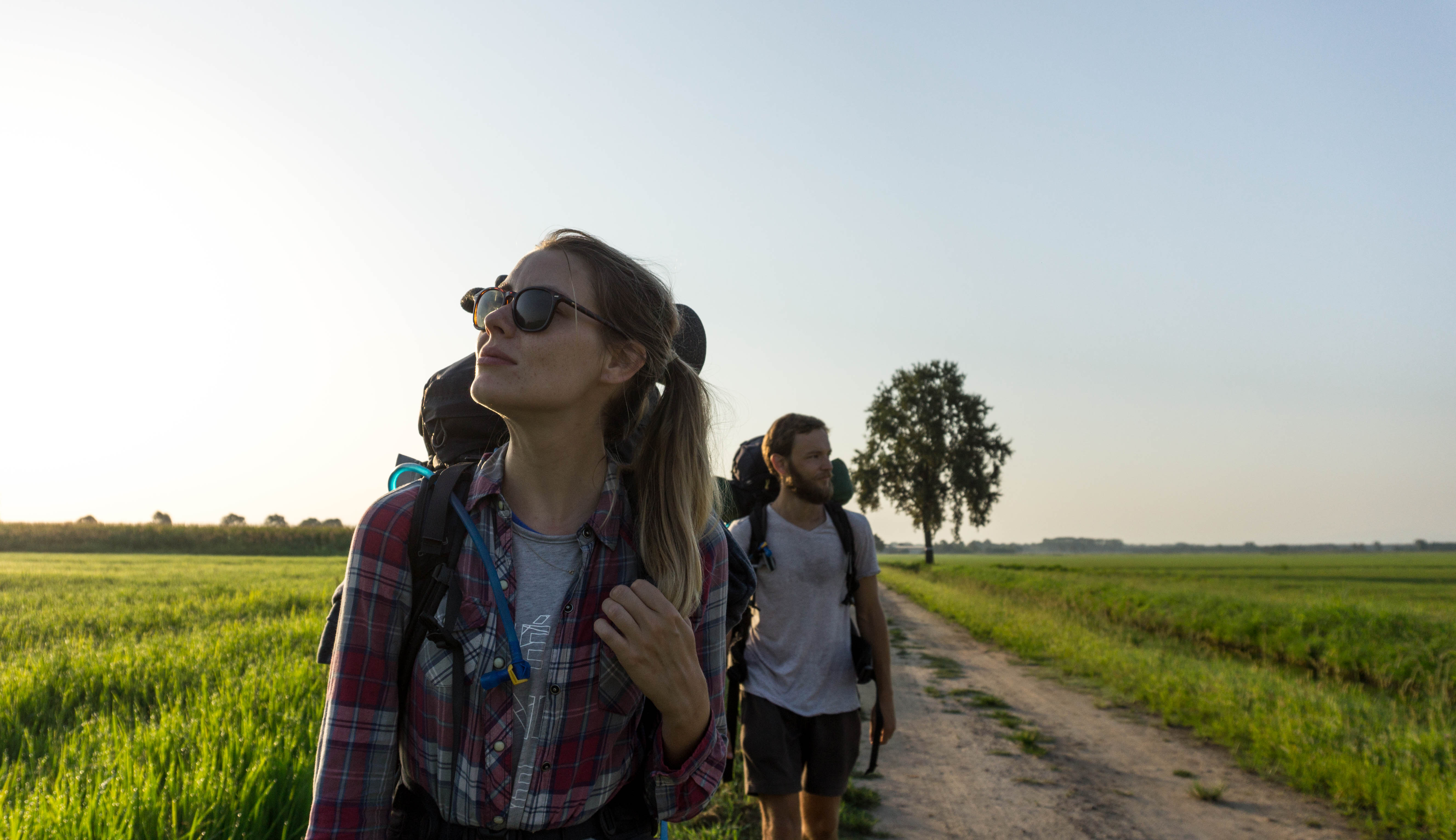
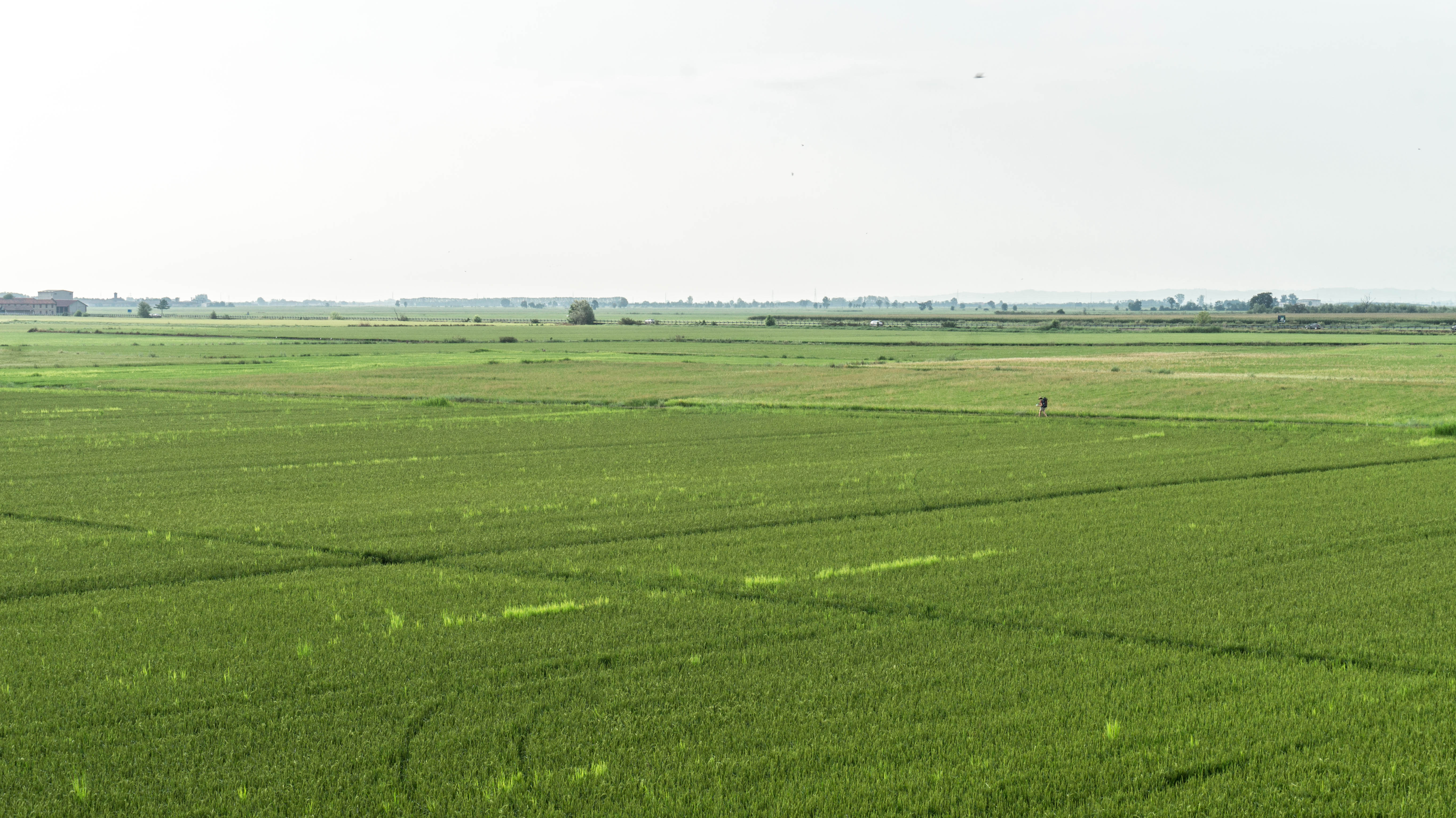
It was in the Vercelli rice fields that we confirmed to ourselves a slow travel truth: if you just keep going and open your eyes, you really get to see some unbelievable places.
So as well as our dawn walks in the rice-desert (as we thought of it), we got to stay in the most incredible 1000-year-old tower built in Palestro right in the middle of the fields. It had a bedroom you had to take an outdoor staircase to get to, ivy growing around the balustrades. And then next in Montara was a cavernous ancient hall with giant wooden beams above us. These experiences were all the more special for being lodged at the centre of those fields.
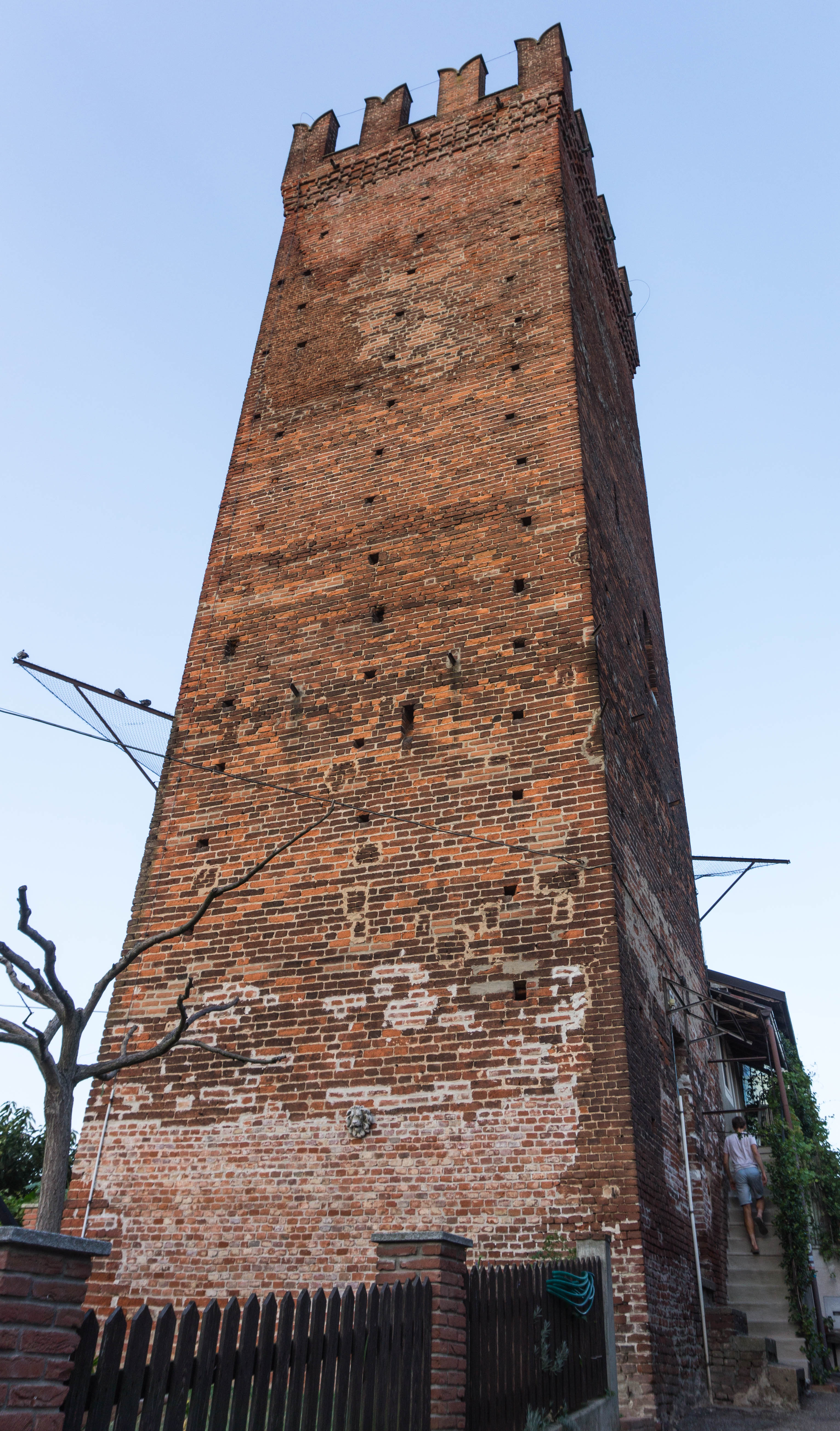
The town of Pavia marked the end of the rice fields.
It thankfully was a bustling, gracious place, a mix of restaurants and cafes with a 700 year old university, and the third largest domed cathedral in Italy. Oh and lovely doors – those big ones that have tiny person small ones within them. It felt like a return to civilisation, like surfacing after a dive.
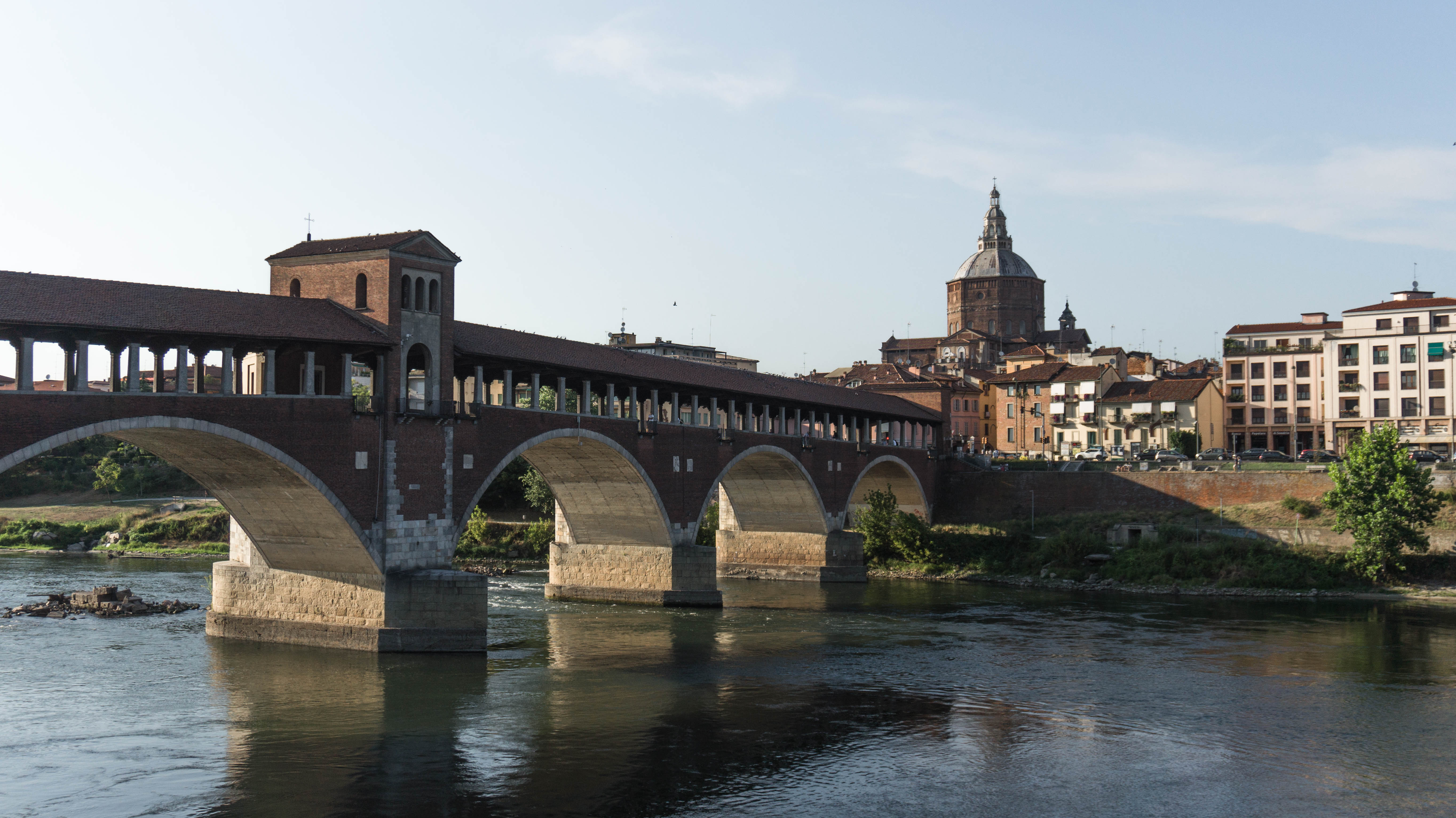
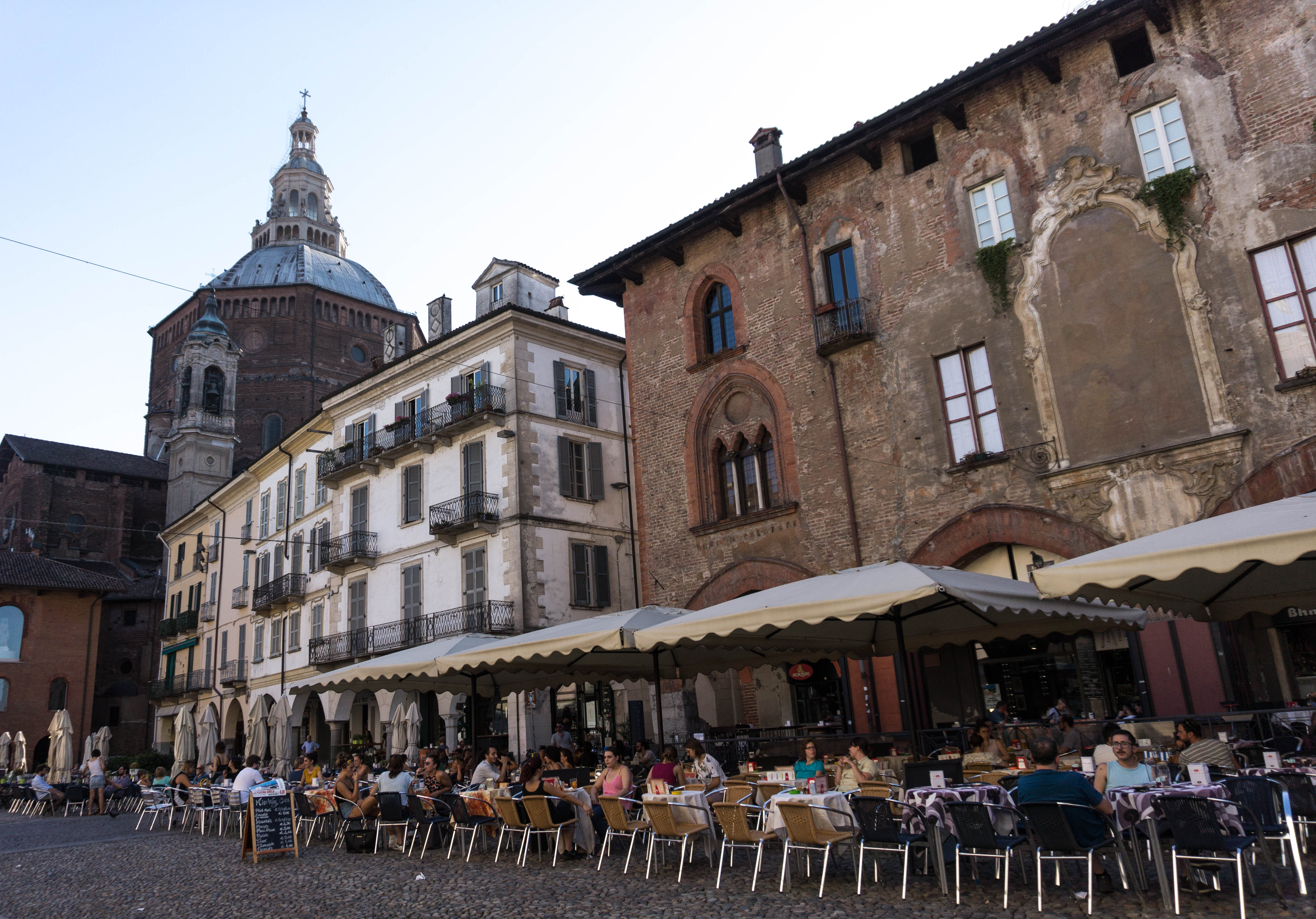
So, we can now say with some authority that there is something genuinely interesting about the landscape and place as a whole.
But this is a tip if the extremes don’t take your fancy: best walked in the spring or autumn. You won’t need to take the train. And let us know what it’s like – the pictures were beautiful!

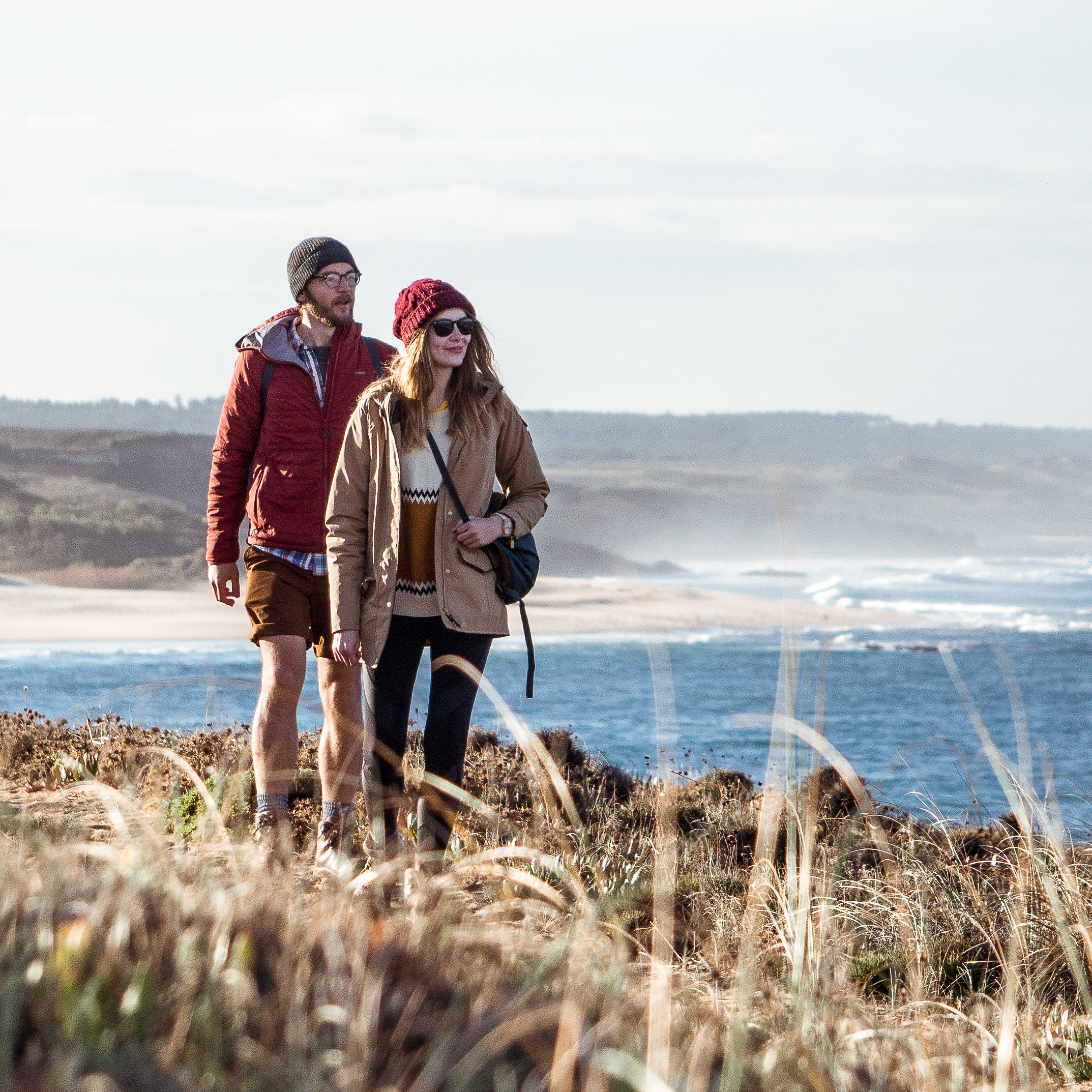
So different from other parts of Italy- must admit it was a region I knew absolutely nothing about. I can understand that the mozzies might well put many people off in the height of summer and you had it particularly hot this year! As always the pictures are lovely and we can almost taste the the flavours of this fascinating area. Almost there now……..
Looking back at the section through the rice fields, we’re so glad to have done it. Very different part of Italy that we’re happy to have seen. Thanks for the comment John!
Again, what a beautiful pictures. Absolutely amazing to read your stories. Well done!!!!!
Thank you so much Corry!
Just read the Vercelli rice fields blog. Wow! What a great adventure. The pictures and your experiences clearly make it truly memorable.
Stopping to take photos in the rice fields was a whole new challenge – as soon as you paused mosquitoes were all over your arms, the camera and landing on your face. Many photos when looked at more closely in edit had mosquitoes in shot, in focus landing or about to land on us! Sketchy place!
If you are doing the Via F route, why take the train and miss such an enthralling mysterious place like the rice fields of vercelli. Well done both of you for putting up with the heat, the smell and those pesky Mozzies along the route. Thank you both for another great read x
Pleasure! Thank you for reading and commenting.